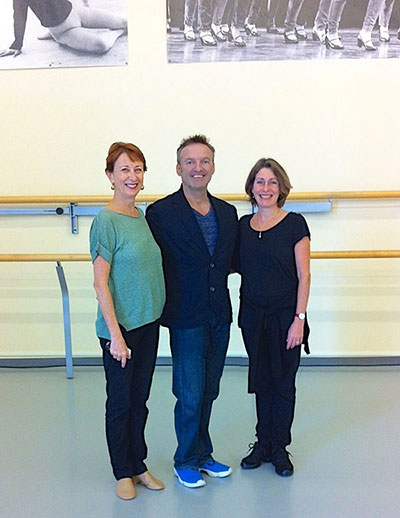From 21 to 26 September, the school’s artistic director Jean-Yves Esquerre and teacher and educational coordinator Laurence Korsenti paid a visit to Canada's National Ballet School led by the visionary and inspirational Mavis Staines. Although they did teach some classes – at the National Ballet of Canada and at Canada’s National Ballet School, respectively – they focused primarily on the teacher training programme at the Toronto school, which has been running for more than forty years. The reason behind the visit was that the Dutch National Ballet Academy is currently working hard on setting up its own teacher training program – aimed at both professional and amateur dance.
‘It was an incredibly exciting visit,’ says Laurence Korsenti. ‘Of course the situation in Canada is very different from here – partly because the teacher training programme at Canada’s National Ballet School has been around for so long and partly because the school can afford far more teaching hours. But when you’re just getting started on setting up a similar kind of programme, it’s important to get an idea of the lay of the land. We are looking into how the Dutch National Ballet Academy can use what we saw in Canada, within the context of our resources and ambitions. But we need to come up with our own programme tailored to our needs.’
In the coming years the Dutch National Ballet Academy wants to offer a training programme for teachers of both amateur and professional ballet. Laurence Korsenti explains that, ‘In the case of amateur ballet, we see it as our role as an academy to contribute to teaching in the Netherlands. By getting teaching up to a higher standard in various parts of the country, you're both creating a broader nursery for talent and increasing the links with the pre-NBA programme.’
In the Netherlands, ballet is too often thought of as being just for ‘sweet little girls,’ believes Korsenti. ‘There’s this pink cloud around it that evaporates when the children get older and start trying out other kinds of dance or even stop dancing altogether. The range of lessons available for these children is often limited. We’re hoping to change this situation by improving the training of teachers for amateurs and helping them enthuse these children – and their parents, too.’
The Dutch National Ballet Academy also wants to help professional dancers by training them as teachers. As Korsenti explains, ‘At the moment they often have to go abroad to train. But the downside is that every country has got its own ‘architecture’ or fundamental principles operating in ballet teacher training. Many of them use just a single specific technique, while in the Netherlands – and that includes the Dutch National Ballet – we tend to be more wide-ranging and use a variety of techniques. So, training teachers for the dance academies will nurture a closer relationship with both the study programmes and the Dutch National Ballet.’
One idea that Korsenti encountered in Canada and that she hopes can be introduced at the Dutch National Ballet Academy is the appointment of assistant teachers. ‘In Canada, dancers who have at least five years’ experience at the highest level with a major company are allowed to assist in ballet school lessons. To my mind it’s a win-win situation, because the dancers learn a lot from it and you also develop a huge potential for future teachers.’
